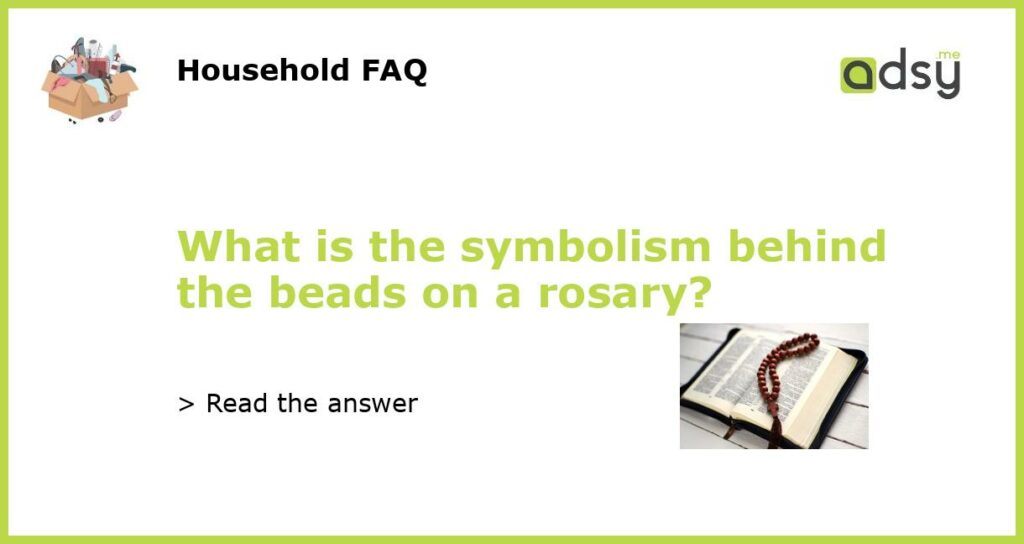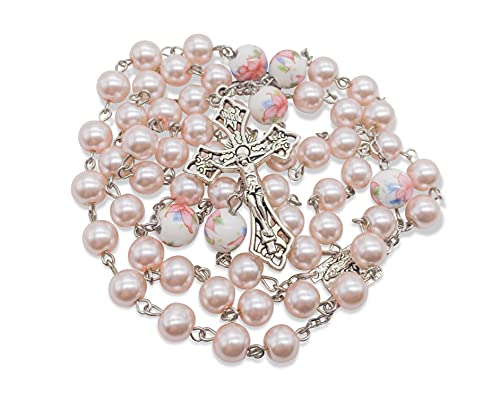Symbolism Behind the Beads on a Rosary
A rosary is a string of beads used by Catholics and other Christian denominations as a guide for prayer. The beads on a rosary hold significant symbolism and are an essential part of this traditional spiritual practice. Here, we will explore the meaning behind the beads on a rosary and their spiritual significance.
What is a Rosary?
A rosary is a string of beads, typically made of wood or other materials, used by Catholics and other Christians for prayer. It consists of a crucifix at one end, a round or cylindrical centerpiece, and a string of beads divided into five decades. Each decade is separated by a larger bead or marker. The rosary is a powerful tool for meditation and offers a structured way to seek divine guidance and connect with God.
The Significance of the Crucifix and Centerpiece
At one end of the rosary, you will find a crucifix representing the ultimate sacrifice made by Jesus Christ on the cross. This serves as a reminder of Jesus’ love and the redemption he brought to humanity. The crucifix often includes small images or symbols that further depict different aspects of Jesus’ life and teachings.
The centerpiece, located at the beginning of the string of beads, usually portrays an image of Jesus, Mary, or a significant event in the Christian faith. It sets the tone for the specific prayers or mysteries that will be contemplated while using the rosary beads.
The Beads and Their Symbolism
The beads on a rosary are used to keep count of prayers and meditations. They serve as tangible reminders and aids to focus the mind during prayer and meditation. Here are the specific beads and their symbolism:
a. The “Our Father” Beads: The larger beads that separate each decade of smaller beads on the rosary are known as “Our Father” beads. These beads are typically where the individual prays the Lord’s Prayer or the “Our Father” prayer. The “Our Father” beads emphasize the importance of praying for forgiveness, seeking guidance from God, and aligning one’s will with His.
b. The “Hail Mary” Beads: The smaller beads on the rosary are known as “Hail Mary” beads. These beads are used to recite the “Hail Mary” prayer, a prayer that honors the Virgin Mary and seeks her intercessory prayers. By counting the “Hail Mary” beads, an individual can focus their intentions and thoughts on specific prayers and meditations.
The Mysteries and Meditation
The rosary is divided into four sets of mysteries, each focused on different events in the life of Jesus and Mary. The Joyful Mysteries reflect on the early life of Jesus and Mary, the Sorrowful Mysteries contemplate Jesus’ passion and death, the Glorious Mysteries celebrate Jesus’ resurrection and life after death, and the Luminous Mysteries reflect on Jesus’ public ministry.
As individuals pray the rosary, they meditate on the mysteries, weaving together the recitation of prayers with reflections on the life and teachings of Jesus and Mary. The beads on a rosary provide a physical rhythm that helps the mind stay focused on the spiritual journey and creates a space for deeper contemplation and connection with God.
The Personal and Universal Symbolism
While the beads on a rosary possess universal symbolism for Catholics and other Christians, they also hold personal significance for each individual. The practice of using a rosary can be deeply personal, offering comfort, guidance, and a sense of spiritual connection.
The beads themselves, regardless of the material they are made of, can serve as a physical reminder of the devotion and prayers offered to God. Each bead represents a prayer of the individual, and over time, the rosary becomes a testament to the spiritual journey of the person using it.
Overall, the symbolism behind the beads on a rosary is rooted in faith, prayer, and meditation. The rosary serves as a powerful tool for devotion, allowing individuals to deepen their connection with God and reflect on the life and teachings of Jesus and Mary.






